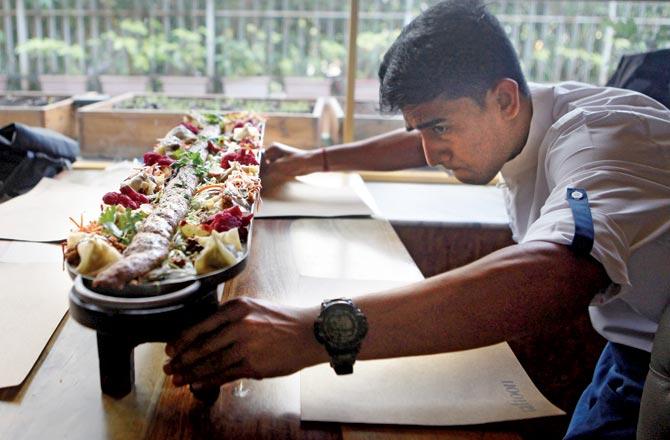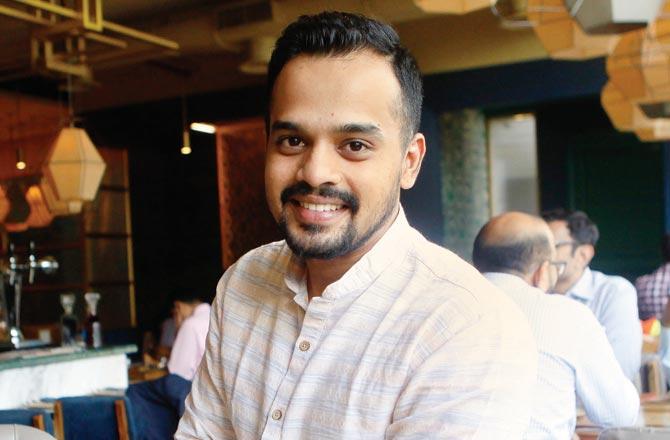A BKC restaurant rolls out street delicacies from a hilly neighbouring country that are hard to find anywhere else in the city

Gosh feel
When Pankaj Gupta, owner of BKC's Taftoon, introduced the koobideh (minced lamb kebab) and mantu (dumplings) earlier this year, he felt the signature Afghan dishes were getting lost on the menu. "Guests presumed that these were just another variety of kebab or dumpling, which they are not," he says. The street food staples from the conflict-torn region, recreated by chef Milan Gupta, were meant to spark conversation among customers unfamiliar with Afghan cuisine. For that, they had to be pulled out of the ordinary.
ADVERTISEMENT
And, there's nothing quite like a jaw-dropping one-metre long kebab sitting on a platter to get your attention. "We thought of creating noise around the dishes through the presentation," he adds. The massive 'MEAT'er' comes with rumali rotis and a side of pickled vegetables, oven-dried tomatoes and salad. A word of caution: keep safe distance from the hot iron plank if you want to avoid scalding your hands.

The one-metre-long koobideh is perfect for a group of four. Pics/Ashish Raje
If the koobideh (R2,799) is the hero, the Afghani mantu is the sidekick, without whom the experience is not complete. Koobidan means slamming in Persian, referring to the style in which the meat is prepared. Afghan cuisine shares similarities with Iranian food, given their porous borders. In this method, the meat is placed on a flat stone and smashed with a wooden mallet, marinated with spices and then cooked on a seekh. The skewers are not like what they use here. They are flat and wide and resemble a sword. The result is an evenly cooked, melt-in-the-mouth kebab that is juicy and mildly flavoured. It can be sliced into bite-sized segments depending on how you like to savour yours. In the Middle Eastern version, the kebab is cooked in its own fat, which gives it a inherently meaty flavour. "They don't mask it with masala," says Gupta.
The mantu, on the other hand, is Afghanistan's answer to the dimsum. "Contrary to popular perception, dumplings originated in Afghanistan. They later travelled to South East Asia," he tells us. The meat-stuffed dumplings they serve here are smaller versions of the original that are large and eaten at one go. Gupta decided it was best not to overwhelm the guests. They come filled with onion and spices, and topped with a garlic-flavoured yoghurt sauce. "In Afghanistan, cooked mantu is often sold at markets and busy streets, much like hotdogs."

Pankaj Gupta
If you are still not done, we suggest you try the gosh-e-fil, made by moulding dough into the shape of an ear (gosh), and deep frying it in oil. Each 'doughnut' is then topped with chopped pistachio and powdered sugar. "It is also a popular street food eaten not as dessert but a quick snack with a hot cup of sweet tea," says Gupta. The Taftoon version called gosh feel (R389) is a moderately sweet, crispy, sugar dusted pastry, deftly paired with reduced hazelnut milk, and toasted vermicelli. All special items are available on the menu till March 31.
In all the excitement, Gupta decided to remind us not to ignore the salad and veggies. "The Afghans can digest meat because they balance it with fibre."
Catch up on all the latest Mumbai news, crime news, current affairs, and also a complete guide on Mumbai from food to things to do and events across the city here. Also download the new mid-day Android and iOS apps to get latest updates
 Subscribe today by clicking the link and stay updated with the latest news!" Click here!
Subscribe today by clicking the link and stay updated with the latest news!" Click here!






